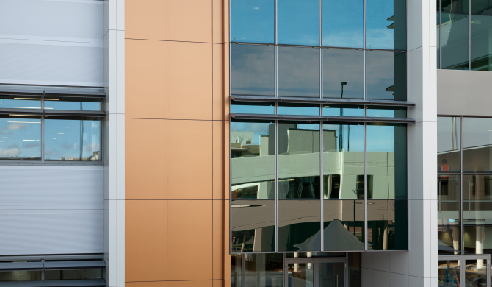PE ACP Panels Ban and Building NSW with Fairview Architectural How the Recent Ban on PE ACP Panels Changes the Façade of the Building and Construction Industry in NSW? The recent announcement by the NSW Fair Trading's Commissioner, Rose Webb, prohibiting the use of some variants of combustible aluminium composite panels (ACPs) on certain building types leave industry specifiers questioning its impact on the building and construction industry. Fairview Architectural have set out a Frequently Asked Questions (FAQs) as a simple guide regarding the issue. If you still have unanswered questions at the end of the article, we would be more than happy to answer them for you. We have included the link here for your additional questions. Fairview Architectural is in full support of this ban, and we find it a well-reasoned and good initiative by the NSW Government to ensure safer buildings and to restore the confidence and trust of the public, as well as industry specifiers. What States and Territories does this Ban Apply to?This ban applies in NSW only since the clause and restrictions of the ban differ as it is imposed by other Australian Regulators in Victoria, Tasmania, South Australia, and New South Wales. Fairview Architectural's technical team have extensively reviewed the notice issued by Fair Trading and share below their summary and views of what this means for the construction industry in NSW and for ACP products in general. What Products does this Ban Apply to?The NSW ban specifically prohibits the use of Aluminium Composite Panels (ACPs) with a core comprised of greater than 30% polyethylene (PE) by mass. This type of panels is not to be used on any external wall, cladding, façade, as well as on building types A & B (as defined in the Building Code of Australia). Are there any Exemptions from the Ban?Yes, there are two exemptions from this ban:
Furthermore, the testing of the above must be done by a NATA approved lab and has to be completed on or after 1 July 2017. What ACP's does this Ban not Apply to?This ban does not apply to products that:
No, a product exempted or not affected by this ban is not automatically deemed compliant. These products must still demonstrate compliance with the Building Code of Australia (BCA) Note: Most solid core ACPs contain combustible content in the core. Even if this is less than 30%, it is likely they do not comply for use on type A & B buildings when tested in accordance with the BCA. When does the Ban Take Effect?The ban commenced on 15 August 2018 and remains in force until it is revoked. Why was the Ban Introduced?Fair Trading has based their decision to implement the prohibition on the following reasons:
Most reputable ACPs such as Vitrabond FR contain 30% or less PE (combustible content) in the core. This means that these products are not forbidden, however, it also does not mean that they are compliant. These products still need stringent testing to demonstrate compliance or accordance with the BCA. Vitrabonds' FR core has been independently tested by the CSIRO to verify the percentage of PE. The CSIRO report confirms that the Vitrabond FR core contains 24.5% PE. Vitrabond FR is therefore not affected by this ban. For more information and clarification, visit www.fv.com.au.
|
Fairview Architectural Profile 02 6352 2355 18-20 Donald St, Lithgow, NSW, 2790
|



 Aluminium Composite Panel Recycling by
Aluminium Composite Panel Recycling by Vitradual Non-combustible Cassette
Vitradual Non-combustible Cassette Sustainable Pre-finished Facade Panels
Sustainable Pre-finished Facade Panels Commercial Facades & Cladding with
Commercial Facades & Cladding with Prefinished Cladding Systems at FRONT
Prefinished Cladding Systems at FRONT Australian First Fully AS5113 Compliant
Australian First Fully AS5113 Compliant 2019 ABCB Code Review - Key Changes by
2019 ABCB Code Review - Key Changes by Natural Stone Cladding in Pale Sandstone
Natural Stone Cladding in Pale Sandstone Fibre Cement Cladding Sheet for Taronga
Fibre Cement Cladding Sheet for Taronga New Prefinished Cladding Innovation Team
New Prefinished Cladding Innovation Team New COO for Fairview Architectural
New COO for Fairview Architectural Aluminum Panels for The Paper Mill from
Aluminum Panels for The Paper Mill from Correct Cladding Installation Methods
Correct Cladding Installation Methods New Building Product Innovations Team
New Building Product Innovations Team Solid Aluminium Panel Facades from
Solid Aluminium Panel Facades from Natural Stone Cladding System | Fairview
Natural Stone Cladding System | Fairview Prefabricated Aluminium Facade |
Prefabricated Aluminium Facade | Coloured Fibre Cement Exterior Panels |
Coloured Fibre Cement Exterior Panels | Luxury Apartment Sunshades | Fairview
Luxury Apartment Sunshades | Fairview Stryum Woodgrain Aluminium Facades |
Stryum Woodgrain Aluminium Facades |
